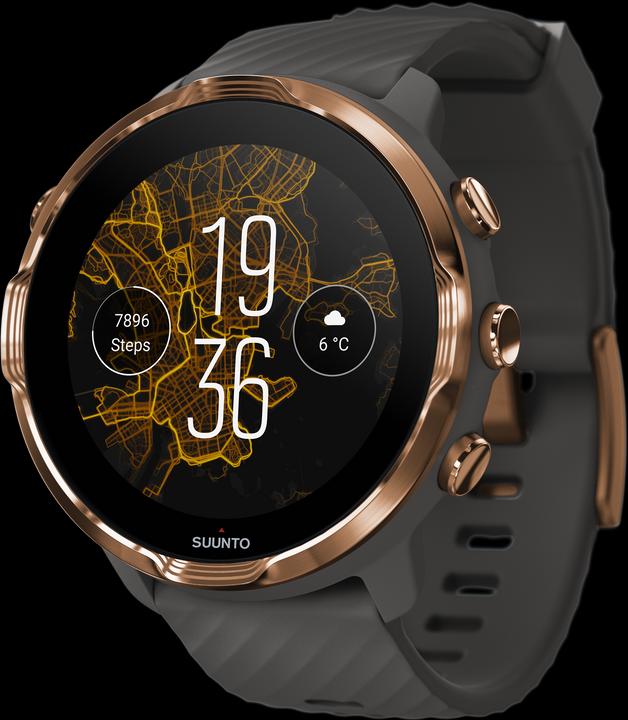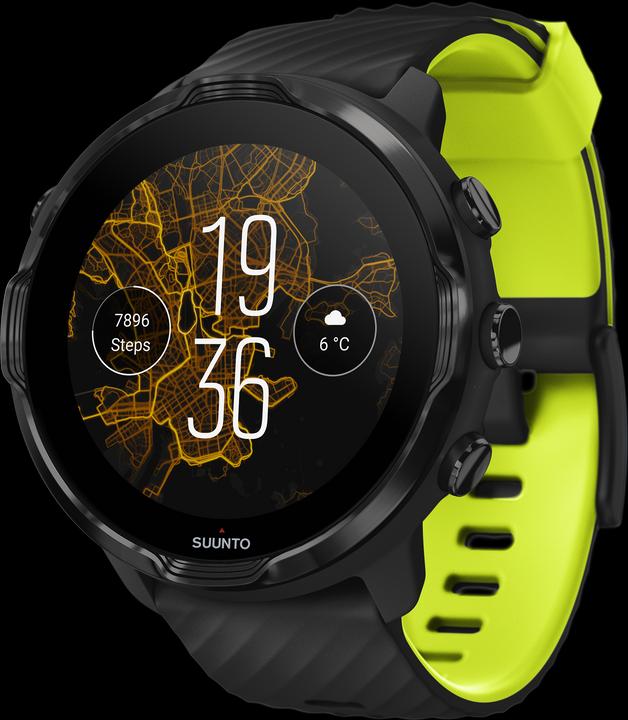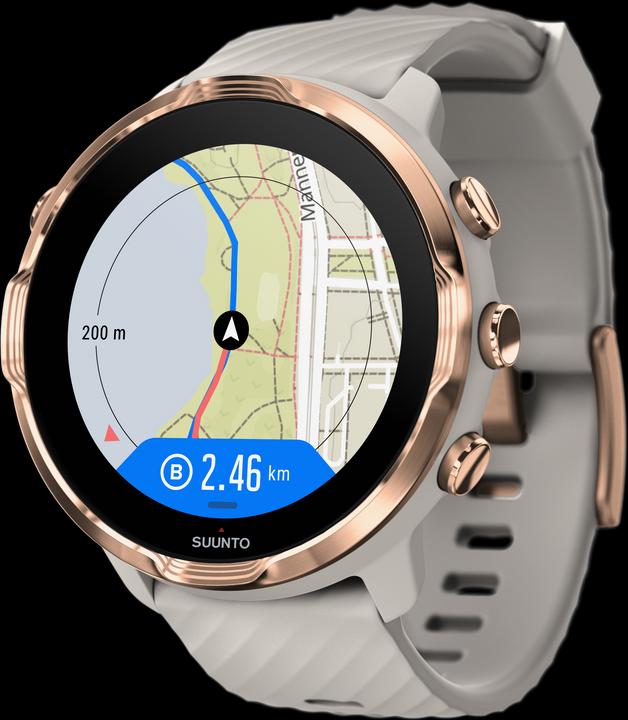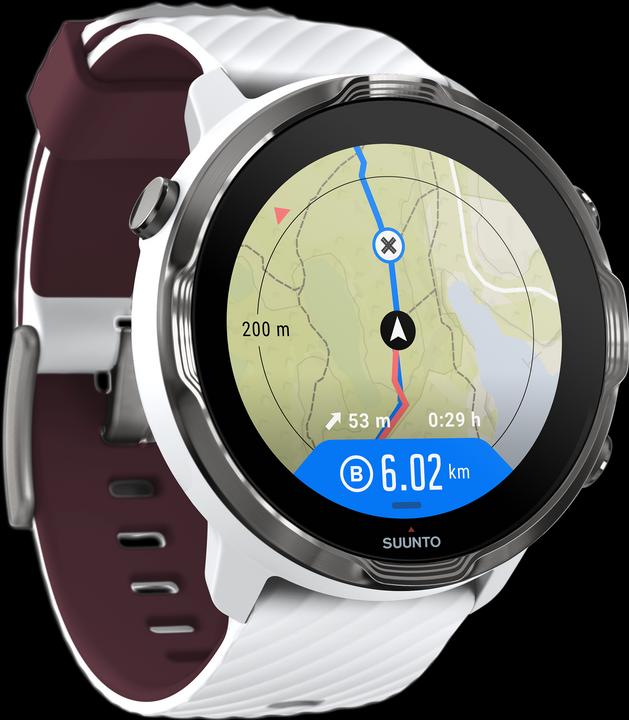

Suunto 7: Solid sports watch held back by price and WearOS
Over 500 francs is a lot of money for any watch, but for a WearOS it borders on extortionate. Does the Suunto 7 deliver above-average performance for that? Unfortunately not quite.
I like to be the test subject when it comes to new WearOS watches. I have not yet given up hope that a proper device from A to Z will finally be released. The Suunto 7, for which the Finnish manufacturer is asking more than 500 francs, therefore sounds very promising. After all, you can expect something for that amount of money, as there are various alternatives from Fossil etc. that cost just half as much. On paper, the Suunto 7 cuts a sporty figure and that is ultimately what it is aimed at.
Specifications
- Display: 1.39 inch Amoled, 454 x 454 pixels, 1000 nits
- Case: 50 mm
- Band: 24 mm, interchangeable
- RAM: 1 GB
- Memory: 4.5 GB
- Transmission: NFC, Wi-Fi
Design and comfort
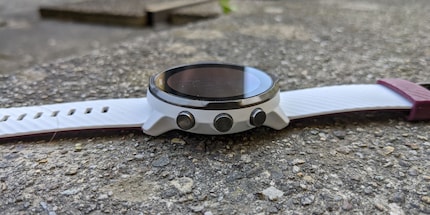
With its 50 mm display, the Suunto 7 is definitely one of the largest smartwatches I have ever tried. The low weight of 70 g and the soft plastic strap make it very comfortable to wear. Even though I prefer smaller watches, I have to admit that the large display makes it much easier to use. On the other hand, I find the four protruding things on the frame a bit stupid. In my opinion, not only does it look stupid, it also gets in the way when I want to swipe my finger across the display. I think a flat surface like on the Fossil Sport is much better.
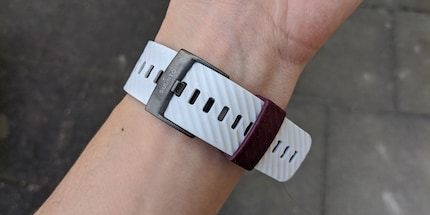
There are five colour variations to choose from in our shop. None of them knock my socks off, but I definitely prefer my white and burgundy model to the two with that cheesy pseudo precious metal frame - especially if you wear it as a sports watch. You can swap out the strap if you need to.
Operation and performance
In addition to the touch display, the Suunto 7 has four physical buttons. You can assign your own functions to the centre right and bottom right buttons. For example, they open Google Pay and Strava. The left button is either the back button or opens the app overview from the home screen. The top right button opens the Suunto app. More on this later.
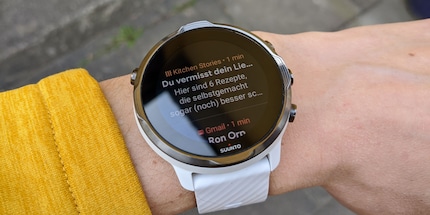
Although the Suunto 7 is also equipped with the outdated Qualcomm Snapdragon 3100 chip, it still responds smoothly and reliably even after several weeks. I've experienced something completely different. Apart from that, you can expect the usual WearOS interface with four menus for each swipe direction. It still works quite well, but Google could really make it a bit more user-friendly.
The battery is also not bad for a WearOS watch. If I don't load the GPS with sports activities, the Suunto 7 lasts a good two days. But if I go jogging or cycling for an hour, it has to be charged in the evening. Suunto itself promises twelve hours in GPS mode.
How fit is it?
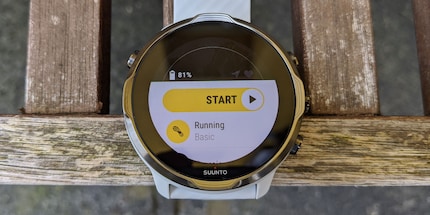
As you would expect from a Suunto watch, the Suunto 7 also has an extensive sports app. You can choose from almost 80 activities, which can be recorded thanks to the GPS and heart rate sensor. I wore it for biking, jogging, cross-training and various workouts. The GPS and heart rate accuracy are the same as the Garmin Venu. The GPS signal is usually found in under a minute. I only had problems with the Strava sports app. The first few times the app worked perfectly, but now it can no longer find GPS. With the Suunto app, it works straight away every time.
The automatic tracking of activities has never worked reliably for me with any watch and the Suunto 7 is no exception. It regularly mistakenly records things like a short trip by car and ignores the bike ride to the pool.
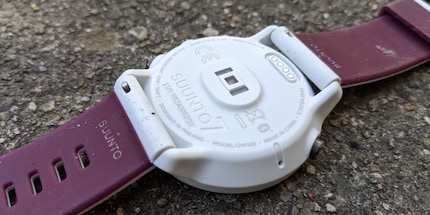
The integrated map material is likely to have contributed to the high purchase price of the Suunto 7. Among other things, it provides you with heat maps of your surroundings, which you can also use offline. For example, you can see whether other Suunto users are travelling in your vicinity and what their routes look like. Of course, you can also use it to navigate. However, this is already a failure with other map apps such as Komoot on the tiny smartwatch displays, so I would never spend (more) money on it.
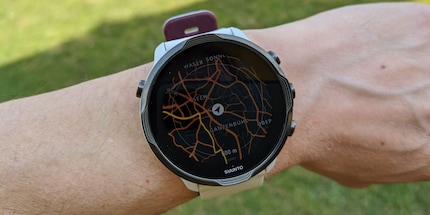
The operation of the Suunto app on the watch is not intuitive enough for me. I rarely know which button to press to end or pause a training session. The combination of touch input and buttons doesn't make it any better.
Smartphone apps
In order to use the watch properly, you need to install two or even three apps on your smartphone. WearOS, Suunto and ideally Google Fit. Because you can only get detailed training information via the Suunto smartphone app. Strangely, however, it only displays information such as steps or calories if you also install Google Fit. The same applies to sleep. You can only track this if you install another app for it.
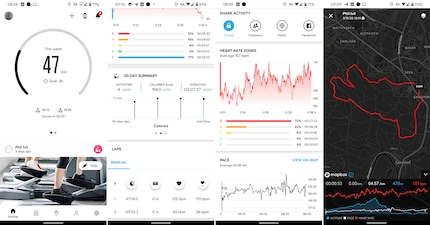
Other than that, the Suunto app is well implemented with a clear display and analyses of your training sessions. However, why you can't create predefined routes or connect a heart rate monitor and the like to the watch is a mystery to me. Even the cheaper sports watches from Suunto can do this.
Conclusion: Too expensive and not sporty enough
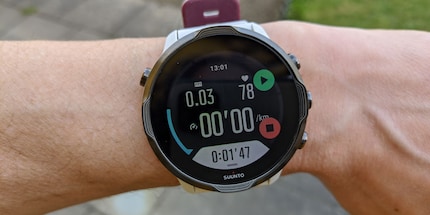
Even if it may sound more negative in the review, the Suunto 7 does a good job overall. I would even dare to say that the Suunto 7 is one of the best WearOS watches on the market. Unfortunately, it is too expensive for a pure smartwatch, as Google has still not brought the operating system to a decent level that could compete with an Apple Watch. For a sports watch, on the other hand, there is a lack of features such as compatibility with external fitness sensors or native sleep tracking. And even there it is too expensive when you consider what alternatives you can get from Garmin and co. for the price.
The Suunto 7 is a solid smartwatch that is difficult to recommend. But if the high purchase price doesn't bother you, you're not an overly demanding athlete and you're absolutely looking for a WearOS watch, then go for it.
As a child, I wasn't allowed to have any consoles. It was only with the arrival of the family's 486 PC that the magical world of gaming opened up to me. Today, I'm overcompensating accordingly. Only a lack of time and money prevents me from trying out every game there is and decorating my shelf with rare retro consoles.
